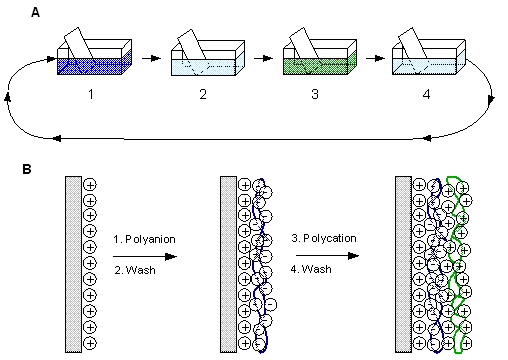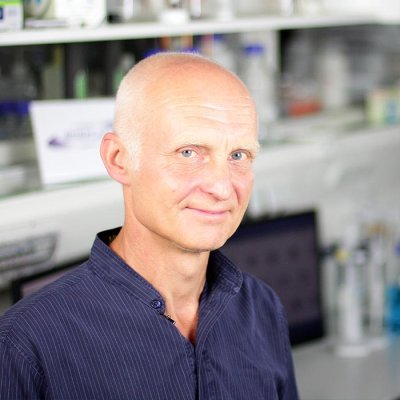Key Technology Layer-by-layer method
What is Layer-by-Layer (LbL) technology?
Layer-by-Layer (LbL) is a nanoscale coating and surface functionalization technology. It mainly leverages the electrostatic pull of charged materials (polyelectrolytes, nanoparticles, etc.) onto an oppositely charged surface. If, for example, an aqueous solution of an anionic polymer (polyanion) is introduced to a positively charged surface, polyanions will adsorb so that the surface charge is reversed from positive to negative. As the surface is now negatively charged, a cationic polymer (polycation) can be introduced to the surface in the same fashion. This layering procedure can be repeated as many times as required.

Which surface properties can be controlled by LbL?
Most practical surface properties can be controlled by LbL coatings based on the selection of polymers or other layer-building materials:
- Hydrophobicity / hydrophilicity
- Permeability (for porous materials)
- Bio- and chemical reactivity
- Optics & haptics and more
In addition to surface modification, hollow capsules can be created by LbL.
How can LbL films be nanometer thin?
Formation of each LbL layer is self-limiting: if, for example, a certain amount of polyanion is deposited at the surface, the surface becomes so negatively charged that no more polyanion molecules can adsorb. The principle is the same for polycations. This self-limiting character of LbL makes deposition of nanometer-thick layers possible without extreme control of the environment.
Which materials can form LbL films?
Not only synthetic charged polymers (polyelectrolytes) but also other charged materials such as proteins, DNA or nanoparticles can be deposited at surfaces with LbL method. These materials can also be combined with one another to offer unlimited coating variations. Even further physical, chemical and biological functions can be created by means of covalent bonding of the layers.
Which surfaces can be modified by LbL technology?
LbL approach can be applied to flat, colloidal, porous or structurally distinctive surfaces of any size in order to coat and functionalize them, practically with infinite options.
